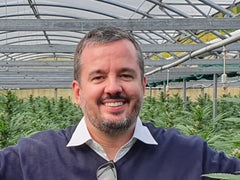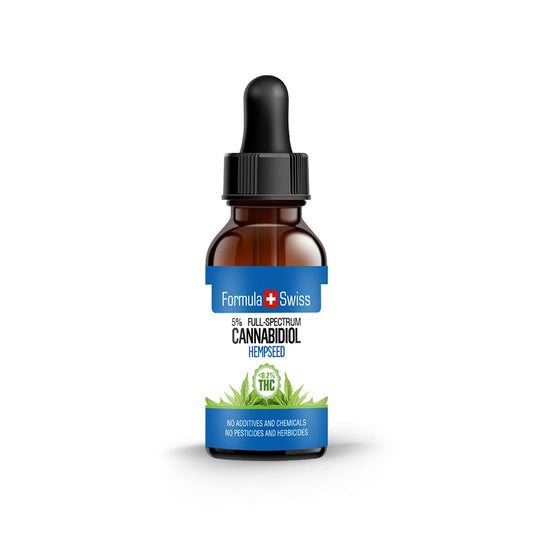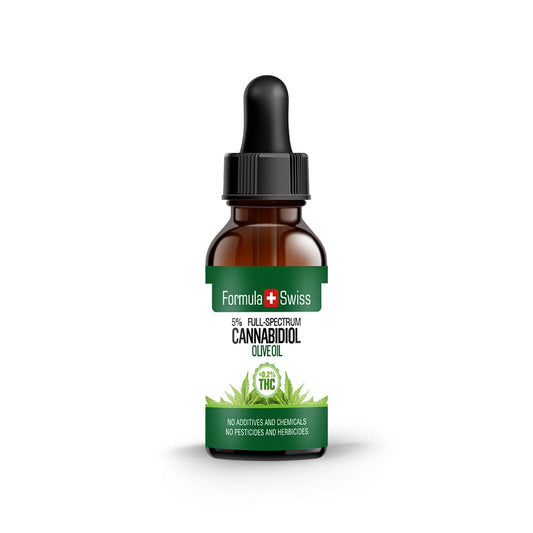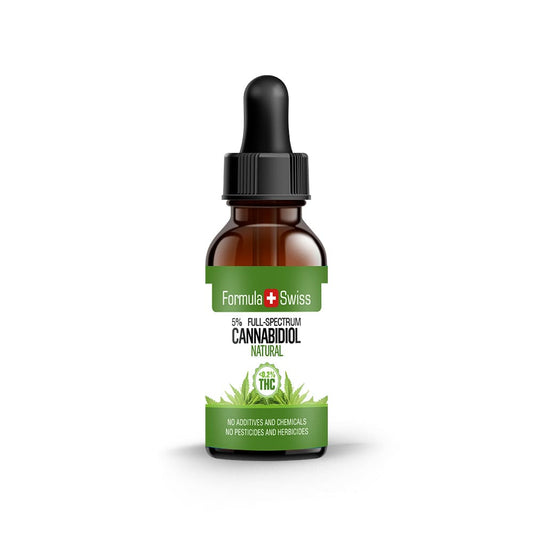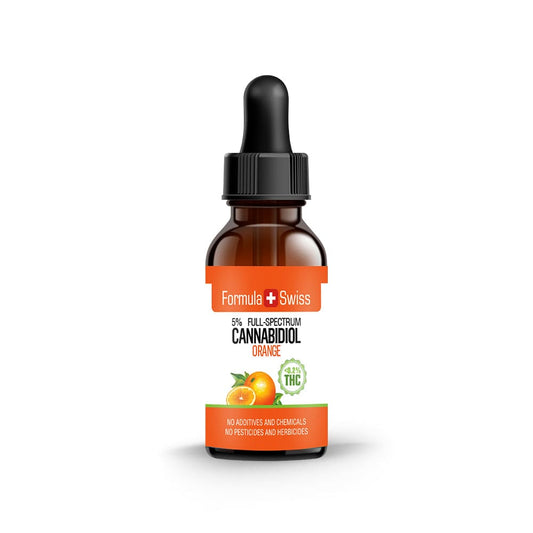CBD is extracted from the hemp plant through a careful process that separates the cannabinoid from the rest of the plant’s material. This involves a combination of harvesting, drying, and using specialised equipment to extract and refine the compound into a usable form.
Having worked in cannabis processing for over a decade, I’ve had the chance to oversee various methods of CBD extraction, from early small-scale systems to modern, regulated facilities. That background gives me a clear view of both the practical challenges and the best practices required for quality and consistency.
This article breaks down the main steps involved in extracting CBD from hemp, drawing on both industry standards and my own direct experience with different extraction systems. The aim is to give you a straightforward, fact-based overview of the process.
If you're involved in growing hemp, manufacturing CBD products, or simply curious about how it's made, understanding the journey from raw plant to refined extract offers valuable insight. Knowing how the extraction works helps ensure reliable production, supports formulation quality, and allows for informed choices at every stage.
Save up to 30% when you order your CBD oil today
Key takeaways
- The role of extraction techniques in determining the quality and reliability of CBD products.
- An overview of the environmental aspects of hemp cultivation and its processing footprint.
- A breakdown of how hemp biomass is processed into refined CBD extracts.
- The importance of third-party testing for maintaining trust.
- Observations on how technology contributes to improved purity and consistency of extracted CBD.
This article is provided for informational purposes only and does not relate to any of the products available in our webshop. For more information, please see our full disclaimer.
Overview of hemp and its various applications
Hemp, derived from the Cannabis sativa plant, is known for its versatility and environmentally conscious uses. It plays a growing role in applications such as sustainable materials, textiles, and hemp biomass processing. Hemp supports various sectors including personal care, construction, and bioenergy, reflecting its practical value.
Hemp biomass is processed to create refined compounds such as CBD extract. This is part of a wider strategy to make full use of the plant in items like textiles, biodegradable packaging, and fuel alternatives. The process showcases how hemp contributes to sustainable production models.

Hemp cultivation supports environmental efforts. It requires relatively little water, typically avoids synthetic pesticides, and absorbs significant levels of CO2. These traits make hemp appealing to environmentally aware businesses. Its processing methods aim to balance product quality with ecological responsibility.
| Application | Description | Benefits |
|---|---|---|
| Plant-based formulations | Used in developing botanical supplements and ingredient-based products. | Supports environmentally responsible sourcing. |
| Energy | Processed into biofuels as alternatives to fossil-based sources. | Helps reduce carbon emissions and promote better air quality. |
| Personal care | Incorporated into skincare and hygiene products made with botanical inputs. | Minimises synthetic chemicals and supports biodiversity protection. |
Hemp offers practical uses that contribute to sustainable production. Its flexibility supports a broad range of industries focused on reducing environmental impact. This opens up new directions for processing hemp biomass efficiently and responsibly.
CBD extraction from hemp
Extracting cannabinoids like CBD from hemp is a specialised practice. The goal is to retain the natural compounds in a stable and usable form. As interest in hemp-based products increases, understanding how these compounds are isolated has become more relevant to both producers and those researching or using them.
Understanding the basics of cannabinoid extraction
This process involves isolating CBD and related compounds from the hemp plant. Doing so effectively is key to achieving a consistent and usable output. Innovations in extraction technology continue to refine the process for improved efficiency and cleanliness.
Key methods of hemp oil extraction
Various methods are used in hemp extraction, each offering unique benefits:
- CO2 extraction: Produces solvent-free extracts, suitable for premium-quality outputs.
- Ethanol extraction: Provides a cost-effective way to retrieve multiple compounds, though it requires strict safety controls due to flammability.
- Butane extraction: Yields a broad spectrum of compounds but must be carefully managed to reduce fire hazards.
Factors influencing the purity and quality of CBD
Final product quality depends on the hemp source, extraction method, and post-processing techniques. Thorough laboratory testing is essential for confirming the presence of desired compounds and ensuring that unwanted residues are not present, supporting consistency and dependable production standards.
The quality of CBD extract depends heavily on the method used. Factors such as plant quality, technology, and steps like distillation and winterisation after extraction all contribute. Adhering to best practices in extraction is essential for obtaining consistent and reliable results.
| Extraction method | Advantages | Disadvantages |
|---|---|---|
| CO2 extraction | High purity, no solvent residue | High initial equipment cost |
| Ethanol extraction | Cost-effective, broad cannabinoid extraction | Flammability of the solvent |
| Butane extraction | High cannabinoid yield | Safety concerns due to flammability |
As interest in hemp-derived products continues to rise, manufacturers must choose extraction methods that are both efficient and aligned with recognised quality and safety standards.
Order and enjoy up to 30% off your CBD oil purchase
The science behind hemp biomass processing
Processing hemp biomass involves more than separating plant compounds. It requires precision to preserve the characteristics of cannabinoids throughout the refinement process. Understanding hemp’s chemical profile helps refine outcomes at each stage of production.
A study published by the American Chemical Society (ACS) indicates that hemp contains over 100 cannabinoids, each with unique structures and profiles. This makes precise processing critical in isolating the desired compounds.
| Cannabinoid | Notes | Located in |
|---|---|---|
| Δ9-tetrahydrocannabinol (THC) | Subject to strict limits | Air-dried inflorescence |
| Cannabidiol (CBD) | Non-intoxicating compound | Secretory cavity, air-dried inflorescence |
| Δ9-tetrahydrocannabivarin (THCV) | Studied for specific properties | Air-dried inflorescence |
Utilising the whole hemp plant allows for efficient extraction while separating undesired elements. Proper drying and handling are critical for maintaining cannabinoid integrity, particularly for acidic variants that degrade with improper processing.
Modern techniques include omics-based approaches, which provide deeper insight into cannabinoid biosynthesis. This can support targeted outcomes and allow for the refinement of hemp varieties for specific applications.
From cultivation to final processing, extracting cannabinoids from hemp requires a solid understanding of both plant science and technical methods.
Sustainable practices in hemp extraction
Efforts within the hemp industry are increasingly focused on reducing environmental impact. Sustainable hemp extraction techniques are being prioritised to support cleaner production workflows and align with responsible operational practices.
Ongoing developments in extraction are aimed at improving efficiency while lowering carbon emissions. CO2-based methods continue to evolve, and newer approaches are being integrated to make production less resource-intensive.
Examining the environmental impact of CBD extraction
Hemp cultivation and refinement must be approached responsibly to minimise environmental strain. Technology upgrades—particularly in CO2 equipment—are supporting efforts to reduce operational emissions and increase efficiency.
Innovations in eco-friendly hemp oil extraction
Recent improvements include the adoption of supercritical CO2 extraction, which avoids harmful solvents. Alternatives like ultrasonic and microwave-assisted extraction are being tested for efficiency and cleaner outputs.
These advancements help reduce both time and energy demands while keeping processes simple and less reliant on hazardous materials.

Solventless options, including rosin pressing and ice water extraction, represent another move towards lower-impact techniques. These methods limit the need for chemical additives and support straightforward extraction principles.
Efforts in ethanol extraction are also helping to make production more environmentally conscious. A comprehensive approach to sustainability focuses on reducing environmental impact while maintaining production standards.
Innovations in nanotechnology and bio-based solvents are part of this effort. Learn more about how these developments support more sustainable approaches to hemp-based applications.
Steps towards responsible hemp extraction are essential for both environmental care and the industry's long-term viability. They support cleaner production and greater accountability.
Order CBD oil now and save as much as 30%
CO2 extraction for CBD
CO2 extraction is known for its precision. It produces a highly refined extract. This method uses supercritical CO2, which behaves as both a gas and a liquid under specific conditions, allowing for the selective extraction of cannabinoids.
This method is non-toxic and offers minimal environmental impact. It is a preferred technique for those aiming to avoid solvent residues and retain the integrity of hemp compounds.
Its precision also allows processors to target specific cannabinoids and terpenes. This supports more controlled and reproducible results during refinement. CO2 extraction remains a core process in the hemp industry, with applications in cannabinoid isolation and product development.

The journey from plant to CBD isolate
The process from raw hemp to CBD isolate focuses on removing unwanted compounds while preserving the targeted ones. Each stage contributes to achieving a highly refined final extract.
The transition from hemp biomass to refined CBD
Transforming raw hemp into refined CBD involves multiple stages. The initial extraction retrieves cannabinoids, followed by filtration and refinement to increase purity. This includes the removal of plant matter and other non-targeted components.
Key steps in CBD isolate production
Distillation is a central step in producing CBD isolate. It involves heating and condensing the extract to separate components based on their boiling points. This helps eliminate residual compounds.
Winterisation follows, where the extract is mixed with ethanol and chilled. This process separates lipids and waxes, further purifying the extract.
Both distillation and winterisation are important for achieving high-purity CBD isolate with consistent composition.
A look inside a modern hemp extraction facility
The development of hemp extraction facilities plays a significant role in delivering refined cannabinoids. These facilities use high-grade extraction systems for consistent outcomes. Precision equipment and strict operational standards support effective and reliable processing.

Inside a modern facility, equipment such as supercritical CO2 extractors and chromatography systems helps maintain extraction quality. These tools support the separation and refinement of cannabinoids with accuracy.
Facilities are expected to adhere to stringent operational and quality standards.. This helps build trust in the process and reflects industry compliance requirements.
| Feature | Description | Impact |
|---|---|---|
| Supercritical CO2 extraction | Applies low temperature and high pressure to extract CBD, maintaining compound stability. | Improves the quality and suitability of CBD for specialised applications. |
| Chromatography | Separates cannabinoids by their chemical properties using a stationary phase. | Supports targeted refinement and higher purity levels. |
| Quality control labs | Use of analytical testing to verify product consistency and composition. | Confirms compliance with internal quality standards. |
The development of CBD extraction technology supports the hemp industry's growth. It also contributes to delivering reliable and high-standard products. As the sector advances, modern hemp extraction facilities will play a significant role in meeting wider demand in an environmentally responsible way.
Best practices in extraction for maximum CBD yield
In hemp processing, the extraction method has a direct effect on yield and output quality. Striking a balance between efficiency and safety is essential for building trust and meeting expectations.
To optimise results, industry best practices include selecting appropriate extraction techniques and conducting thorough testing throughout production.
Precision in the extraction process plays a key role in achieving high yields and consistency. CO2 extraction is widely used for its efficiency and lack of solvent residue. Each method offers specific benefits: CO2 avoids solvents, ethanol is economical, and hydrocarbon techniques can result in highly refined oils.

Optimising the extraction process for precision
Maintaining cannabinoid integrity involves controlling key variables such as temperature and pressure. CO2, ethanol, and hydrocarbon-based methods all require specific settings to maximise efficiency and minimise degradation of the desired compounds.
Quality control and testing throughout the CBD extraction
Strong quality assurance procedures are essential throughout the production process. Ongoing testing helps identify residues like pesticides or heavy metals and confirms cannabinoid content, ensuring consistency and reliability in the final product.
As interest in CBD increases, maintaining stringent testing is essential. Post-extraction analysis checks for residual solvents and verifies labelling accuracy.
Robust testing protocols support better outcomes and consistent product standards. Clear procedures and compliance practices are central to sustainable progress in hemp extraction.
From plant material to formulated products
The growing acceptance of hemp-based ingredients has contributed to a broader range of hemp-derived products. These are designed to meet market demands and reflect a shift toward plant-based alternatives.
Products such as topicals are developed with usability and composition in mind. They reflect ongoing research and demand for alternatives aligned with personal preferences.
From cultivation to final refinement, hemp processing involves meticulous control. Following this, various extraction techniques are used to create formulations that include topicals and other non-ingestible options.
Laboratory testing plays a role in verifying composition, cannabinoid levels, and purity. This includes checks for compounds such as CBN and CBG. Packaging and storage processes are also managed carefully before release.
The variety of products showcases hemp's versatility across different uses. Industry priorities remain centred on delivering reliable and safe offerings that align with established standards and expectations.
Personal perspective
Early in my career, I worked with teams that experimented with a variety of methods, some successful, others less so, and those trials taught me that even small changes in temperature, pressure, or solvent choice can significantly affect the outcome.
Over the years, I’ve come to respect the technical demands of extraction as much as the agricultural side of hemp cultivation. This process is not just mechanical; it requires a deep understanding of the plant itself. Each batch of hemp presents unique characteristics based on its genetics, growing conditions, and harvest timing.
The ability to adapt and respond to these variables is something that only experience can teach. My goal in writing this article is to offer a practical and informed overview of CBD extraction that reflects both the science and the day-to-day realities of production.
Don’t miss out—save up to 30% when you purchase CBD oil today
Frequently asked questions
How is CBD derived from hemp?
CBD is obtained from hemp through a technical extraction process. Cannabinoids are separated from plant biomass using methods like CO2 or ethanol extraction, aiming for high precision and minimal unwanted residues.
What are some sustainable practices in hemp extraction?
Eco-conscious hemp extraction may include the use of supercritical CO2, energy-efficient equipment, and reduction of solvent waste. These practices help lower the environmental impact of processing activities.
What is the importance of understanding the basics of cannabinoid extraction?
Understanding extraction techniques supports informed decision-making for both manufacturers and clients. It contributes to transparency, process efficiency, and final product reliability.
What methods are used for hemp oil extraction?
Common methods include CO2 extraction, ethanol extraction, hydrocarbon-based approaches, and lipid infusion. The choice depends on output requirements and processing priorities.
How does the choice of extraction method influence the purity and quality of CBD?
Extraction methods influence both the clarity and profile of the final product. Steps such as distillation and winterisation remove unwanted elements and concentrate the desired components.
What role does the science of hemp biomass processing play in cannabinoid extraction?
Processing science ensures that extraction is carried out efficiently while preserving target compounds. Knowledge of hemp’s chemical composition is essential for optimising outcomes.
How does the CO2 extraction method benefit CBD refinement?
CO2 extraction enables selective targeting of cannabinoids without relying on harsh solvents. It helps preserve cannabinoid structure and is widely recognised for its low environmental impact.
What are the key steps involved in producing CBD isolate?
Production of CBD isolate includes initial extraction, followed by purification techniques such as distillation and winterisation. These steps remove plant waxes and fats, resulting in a high-purity final product.
What distinguishes a modern hemp extraction facility?
Modern facilities feature precision-engineered equipment and uphold strict compliance standards. These elements contribute to operational consistency and high product quality.
How do best extraction practices contribute to the maximum CBD yield?
Following best practices helps extract the most cannabinoids from hemp biomass. Careful control of temperature, solvent ratios, and testing protocols improves extraction efficiency and reliability.


